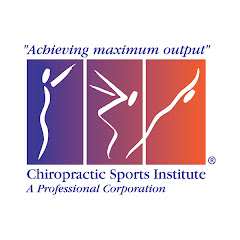When initially seeing a patient that is very active, which present with back, hip, knee, and chronic ankle and foot problems; the first place I look to is the foot and how it is moving and functioning. Why? Our feet are the foundation to our bodies. The feet are the first joints that withstand forces thru our body during movement. These forces, if altered can cause a dramatic effect on how the rest of the body is going to move leading to different pain syndromes. If the foundation is not able to stabilize the rest of the body, then it is not long before we start to see wear and tear on other parts of the body.
The gait cycle is a term that represents the period of time between successive ipsilateral(same side) heel strikes; that is, it begins when the heel first strikes the ground and ends the moment that the same heel strikes the ground with the next step. So what happens to the foot that can cause pain during the gait cycle? Two of the most important motions that occur during the gait cycle are pronation and supination.
Pronation refers to the inward roll of the foot during normal motion and occurs as the outer edge of the heel strikes the ground and the foot rolls inward and flattens out. A moderate amount of pronation is required for the foot to function properly, however damage and injury can occur during excessive pronation, more commonly know as hyperpronation. An easy way to check if you are hyperpronating is to look at the back of the Achilles tendons. If they are bowing inwards, you are hyperpronating! Also look at your shoes, either dress or athletic, if they are worn out on the outside of them, guess what. Hypronation flattens the arch and stretches the muscles, tendons, and ligaments underneath the foot.
Supination is the opposite of pronation and refers to the outward roll of the foot during normal motion. A natural amount of supination occurs during the push-off phase of the running gait as the heel lifts off the ground and the forefoot and toes are used to propel the body forward. However, excessive supination, which is called hypersupination (excessive outward rolling) places a large strain on the muscles and tendons that stabilize the ankle, and can lead to chronic ankle sprains.
Symptoms of excessive pronation and supination are
Arch pain, heel pain, flat feet, corns and calluses, ankle sprains, shin splints, plantar fascitis, shin splints, Achilles tendonitis, knee pain, hip pain, and chronic back pain.
Prevention and Treatment
1)At CSI we do a comprehensive gait analysis of what your foot is doing while standing and in motion thru our footmaxx system. www.footmaxx.com
2)Specific Biomechanical adjustments to the foot, ankle, knee, and low back to help restore normal motion through out the body.
3)Specifically made orthotics tailored to your foot and to what kind of activities your like to participate in. Footmaxx orthotics can also be designed not only for athletic shoes but also for mens and womens dress shoes.
4) Specific exercise and stretches to help restore strength and flexibility to the
Foot.
Taking care of your feet are very important to the rest of your body. If you’re experiencing any of the symptoms, please, listen to your body, and don’t wait for it to lead to something else.
Dr. Derek Pelofsky is a certified chiropractic sports practioner. He is currently practicing at the chiropractic sports institute in Westlake Village. To schedule an appointment, Dr Pelofsky can be reached at 8053710737. WWW.GOTCSI.COM
Subscribe to:
Post Comments (Atom)


No comments:
Post a Comment